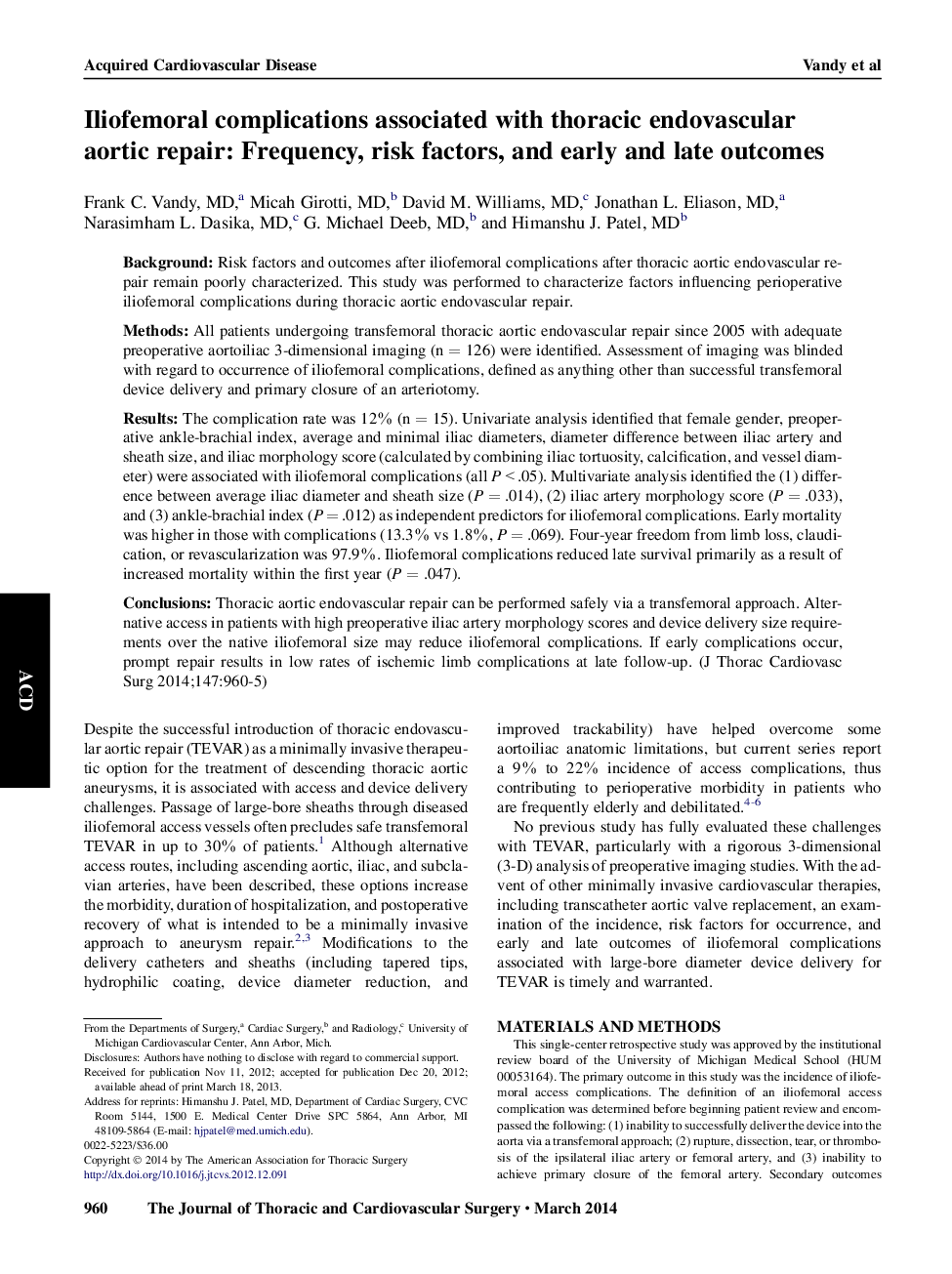| Article ID | Journal | Published Year | Pages | File Type |
|---|---|---|---|---|
| 5989775 | The Journal of Thoracic and Cardiovascular Surgery | 2014 | 6 Pages |
BackgroundRisk factors and outcomes after iliofemoral complications after thoracic aortic endovascular repair remain poorly characterized. This study was performed to characterize factors influencing perioperative iliofemoral complications during thoracic aortic endovascular repair.MethodsAll patients undergoing transfemoral thoracic aortic endovascular repair since 2005 with adequate preoperative aortoiliac 3-dimensional imaging (n = 126) were identified. Assessment of imaging was blinded with regard to occurrence of iliofemoral complications, defined as anything other than successful transfemoral device delivery and primary closure of an arteriotomy.ResultsThe complication rate was 12% (n = 15). Univariate analysis identified that female gender, preoperative ankle-brachial index, average and minimal iliac diameters, diameter difference between iliac artery and sheath size, and iliac morphology score (calculated by combining iliac tortuosity, calcification, and vessel diameter) were associated with iliofemoral complications (all P < .05). Multivariate analysis identified the (1) difference between average iliac diameter and sheath size (P = .014), (2) iliac artery morphology score (P = .033), and (3) ankle-brachial index (P = .012) as independent predictors for iliofemoral complications. Early mortality was higher in those with complications (13.3% vs 1.8%, P = .069). Four-year freedom from limb loss, claudication, or revascularization was 97.9%. Iliofemoral complications reduced late survival primarily as a result of increased mortality within the first year (P = .047).ConclusionsThoracic aortic endovascular repair can be performed safely via a transfemoral approach. Alternative access in patients with high preoperative iliac artery morphology scores and device delivery size requirements over the native iliofemoral size may reduce iliofemoral complications. If early complications occur, prompt repair results in low rates of ischemic limb complications at late follow-up.
